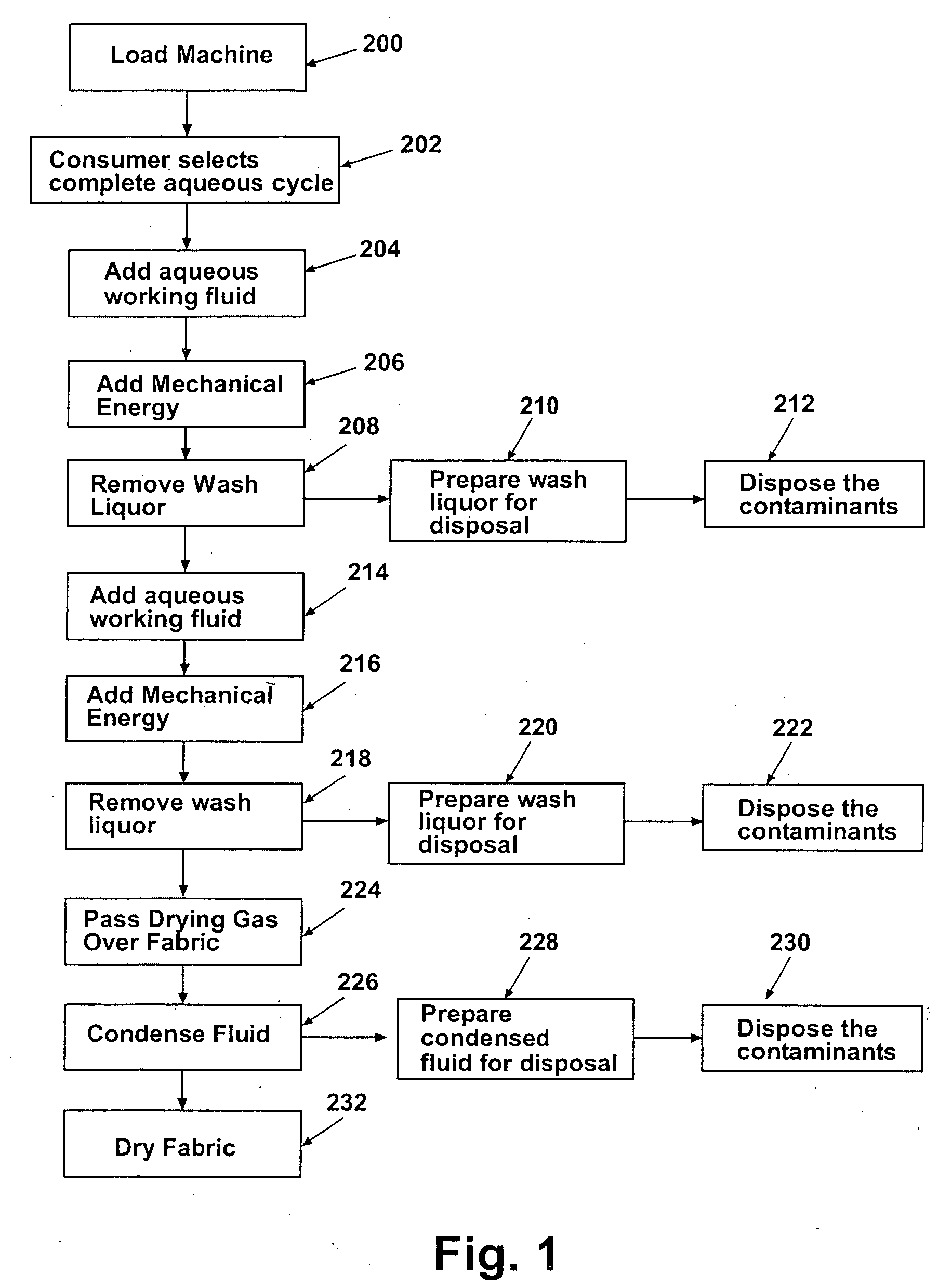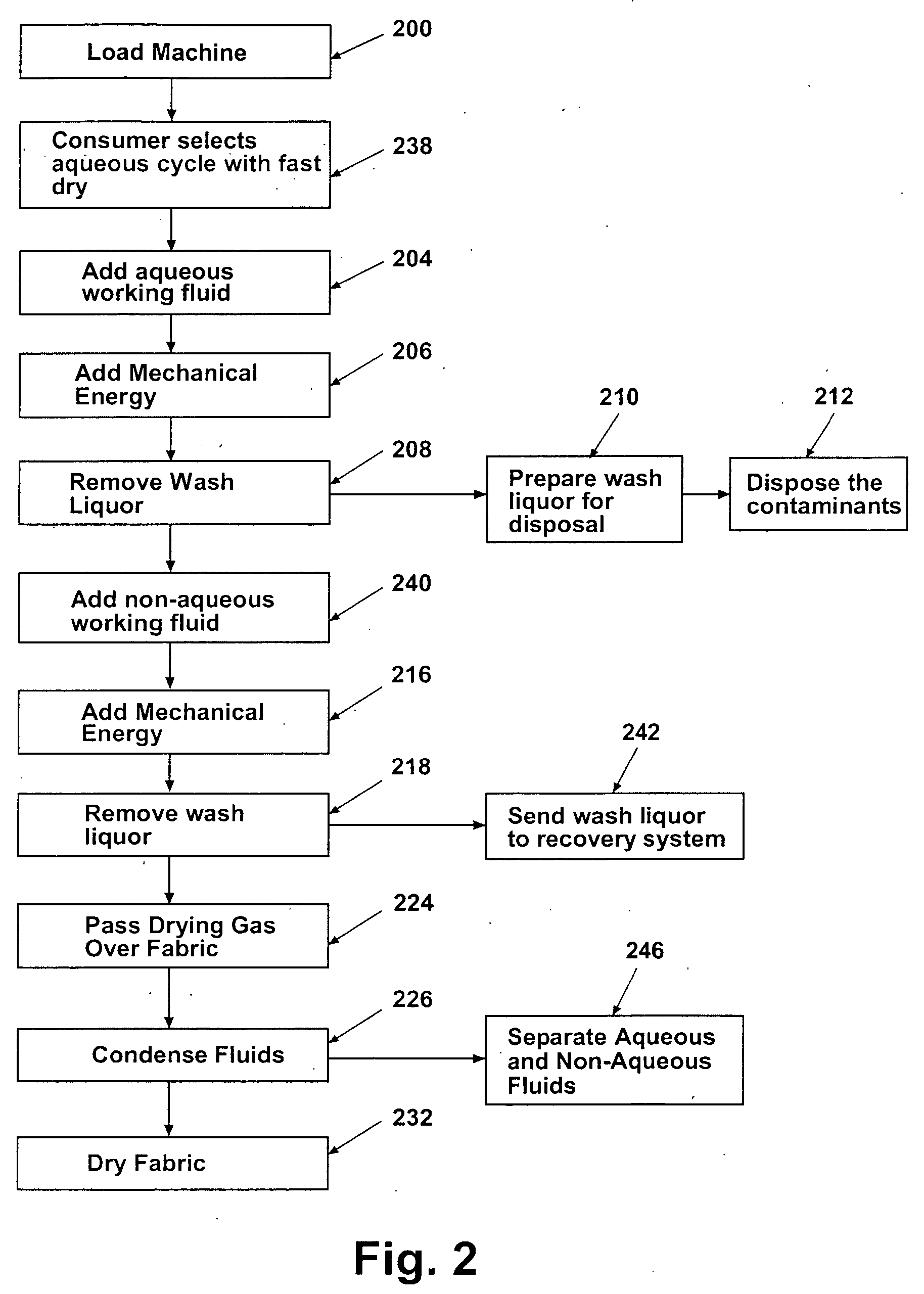Multifunctioning machine and method utilizing a two phase non-aqueous extraction process
a multi-functional machine and extraction process technology, applied in the direction of liquid soap, detergent compounding agent, cleaning using liquids, etc., can solve the problems of many limitations associated with such attempts, difficult to remove fabric without adding a lot of energy, damage to many traditional laundered clothes at home, etc., to reduce shrinkage, reduce drying time, and accelerate drying
- Summary
- Abstract
- Description
- Claims
- Application Information
AI Technical Summary
Benefits of technology
Problems solved by technology
Method used
Image
Examples
Embodiment Construction
[0046] Modifications of the machine shown in U.S. Patent Application 20040117919 has been used to test the efficacy of the washing and recovery operations of the present invention and which are described in the following specification are incorporated herein by reference.
[0047] Patent application Ser. No. 10 / 956,707 describes a similar technique utilizing a select rinse fluid and is therefore, included herein for reference.
[0048] Figures in both the aforementioned cases (US 20040117919 and Ser. No. 10 / 956,707) show machines that can be used for techniques described in this invention. In the instance for both an aqueous and non-aqueous working fluid, it should be noted that the dispensers might be separate for each classification of fluid, chambered separately within the same housing, or be the same dispenser. The key features would be sensing technology that would recognize the differences that exist between the working fluid's detergent formulation; thus indicating to the consume...
PUM
 Login to View More
Login to View More Abstract
Description
Claims
Application Information
 Login to View More
Login to View More - R&D
- Intellectual Property
- Life Sciences
- Materials
- Tech Scout
- Unparalleled Data Quality
- Higher Quality Content
- 60% Fewer Hallucinations
Browse by: Latest US Patents, China's latest patents, Technical Efficacy Thesaurus, Application Domain, Technology Topic, Popular Technical Reports.
© 2025 PatSnap. All rights reserved.Legal|Privacy policy|Modern Slavery Act Transparency Statement|Sitemap|About US| Contact US: help@patsnap.com



